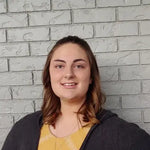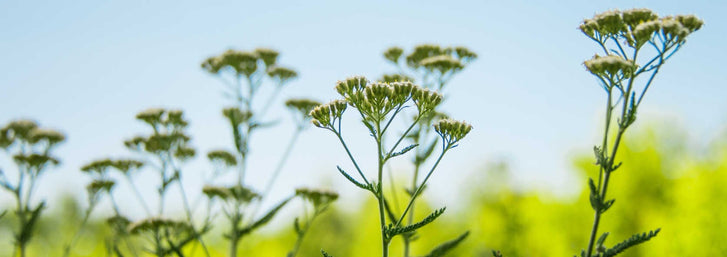
Ashleigh Smith

 |
Written By Lara Wadsworth |
One of the surefire companions of gardening is the unfortunate presence of pests. Very rare is the gardener who has never had a pest in their crop. Springtime can especially be anxiety-ridden because that is when all the dreaded pests are scheduled to make their first appearances! Here are the most common springtime pests that we see in our gardens and what to do about them!
Snails and Slugs
Slugs and snails love the wet weather that accompanies spring. They can be cute to kids, but in large quantities, they can eat up leaves and fruits overnight.
- Prevention: Avoid overwatering. Many climates don’t require much additional watering beyond spring rains and snow melt until mid to late spring. If certain plants need more water than others, try to target only those that need it with the hose or watering can.
- How to get rid of them: When you notice lots of slugs or snails flocking to your garden, the easiest way to get rid of them is hand removal. When there are so many that the task seems unattainable, you can try a cup of beer. You read that right. Beer! Simply bury a cup filled with beer in the soil so that the rim is at soil height and wait. The slugs and snails are attracted to the sugars and yeasts in the beverage and will crawl right over and fall in. Bury several cups in multiple places if needed.
- Detering companion plants: Rosemary, Lavender, Marigolds, and Black-Eyed Susans.
Aphids
Aphids are tiny insects that suck the sweet juices out of your plants. They reproduce astonishingly fast, and can truly disseminate a crop in large numbers. They come in various colors, from green to black to red, but they look like tiny little teardrops with legs. Most people can see them with the naked eye, but they are usually smaller than a sesame seed. They are typically found on the underside of leaves, on budding flowers, or on nearby stems.
- Prevention: Maintain healthy and strong plants. Periodically spray your leaves (on top and bottom) with a mixture of water and dish soap. This will make the leaves slippery, and the aphids will not be able to attach.
- How to get rid of them:Once aphids are present, you must act fast! They reproduce so efficiently that they can become a serious problem very quickly. If you have noticed only a few, take a towel or paper towel with either horticultural oil or rubbing alcohol and wipe the leaves clean of the aphids. If you have lots, spray your leaves with horticultural oil every day and wipe the leaves with rubbing alcohol until you can’t find them anymore. Aphids can jump, so check all your plants frequently on all sides of the leaves before you proclaim yourself triumphant.
- Note about ladybugs: Ladybugs famously eat aphids! However, before you rush to buy a bottle of ladybugs at the garden center, consider the effects. Most ladybugs sold are non-native. This has created a problem in recent years with invasive ladybug species. Instead, plan to use plants that attract ladybugs naturally such as fennel, yarrow, alyssum, and dill!
- Detering companion plants: Garlic Chives, Bunching Onion (green onion), Dill, and Fennel.
Spider Mites
Spider mites are literally a member of the spider family but instead of feeding on other insects, they suck the juices out of plants for sustenance. They most commonly look like tiny red or white dots typically found on the underside of leaves. Check your plants frequently as they are hard to see until the problem already exists! A microscope, loup, or magnifying glass can be helpful in identifying these little creatures.
- Prevention: Spider mites like hot, dry conditions. Prevent this by spraying your leaves with water every other day. This will create an undesirable environment for the spider mites. You can also try the water and dish soap trick mentioned above in aphid prevention.
- How to get rid of them: Spraying water on the leaves can be surprisingly effective in getting rid of spider mites as well. When it is just a handful of plants that are infested, I like to wipe off the leaves with rubbing alcohol. This will kill the spider mites quickly. Frequent applications of horticultural oil spray can also be very effective and safe for large infestations.
- Detering companion plants: many of the allium family like Leeks, Onions, Chives, and shallots.
Whiteflies
Whiteflies are tiny white bugs with wings that suck on sweet plant juices. They create a sticky substance on the bottom of leaves from their feeding which can attract molds and mildews. They are usually able to be seen with the naked eye.
- Prevention: Spray your plant leaves (top and bottom) with a mixture of water and dish soap. If any whiteflies are present, they will die. If not, the dish soap will make the leaves hard to hold on to when they do arrive.
- How to get rid of them: Alternate sprays of water and dish soap with a horticultural oil such as neem oil. The combination should drastically reduce the population to a manageable level or eliminate it altogether.
- Detering companion plants: Basil, Catmint, Chives, Dill, and Marigolds.
Caterpillars and Other Worms
These can come from a wide variety of different species, but they are all frustrating. They chomp on leaves and then turn into moths or other types of flying insects to spread the ‘joy’. They are typically quite easy to spot as they are large enough to see with the naked eye and gaping holes that are hard to look past.
- Prevention: The best way to prevent these is to plant strong-smelling companion plants that they don’t like (see below).
- How to get rid of them: If you already find yourself with these chomping bugs, the best way to get rid of them is hand removal. Check your plants every day and physically remove them! Another method of control includes the safe and non-toxic microorganism Bacillus thuringiensis, which is commonly found in soils around the world. This microorganism, when thoroughly sprayed on the leaves, will thwart the caterpillars and other harmful worms (not earthworms), potentially preventing them from coming next year. You can buy it at most garden supply stores from a variety of brands. Springtime is the best time to apply this product.
- Detering companion plants: Mint, Lavender, Mugwort, and other herbs.
Author Bio
 |
Lara Wadsworth, True Leaf Market Writer |
I am a native of Southwestern Michigan, where I also reside, and I love all things plants! I got a Bachelor's Degree in Horticulture and found the first work-from-home job I could get. Now, I spend my days writing for TLM, playing with my dog, eating delicious food with my husband, and plotting my next landscape or gardening move. I believe everyone should get down and dirty in the soil now and then. Happy Gardening!
About the Author

I'm Ashleigh Smith, a native to Northern Utah. I first gained a love of gardening with my grandmother as I helped her each summer. I decided to make a career of it and have recently graduated with a Bachelor's degree in Horticulture from Brigham Young University - Idaho. My studies have focused on plant production while I also have experience in Nursery & Garden Center Operations.
Become a True Leaf Market Brand Ambassador! You’ll enjoy awesome perks, free products and exclusive swag & offers! Help us create a gardening revolution and help others experience the joy of growing!
Leave a comment
Your email address will not be published. Required fields are marked *
0 Comments
No Comments yet! Be the first to start a conversation
Further Reading

10 Natives of the Southwest USA for Pest Control
Written By Lara Wadsworth The Southwestern United States is a region incredibly unique to the rest of the country. The hot, dry weather can be challenging for plants and animals to thrive without additional help. That is why gardening with natives can ...

Ashleigh Smith
2024-04-157 min read0
Spring Into Action - Celebrating Earth Day
Written By Chelsea Hafer Spring is quickly arriving, and that means that Earth Day is near! Earth Day is the perfect occasion to appreciate our wonderful planet and all that it does for us and think of ways you can give back to it. In this blog post, w...

Ashleigh Smith
2024-04-154 min read0
Everything You Need To Know About Rain Gardens
Written By Lara Wadsworth Rain gardens are quickly gaining popularity for their perfect marriage of utility and beauty. What simply looks like a beautifully landscaped garden is actually a native habitat that serves as a storm drain and water sponge. B...

Ashleigh Smith
2024-04-085 min read1
Northeastern Natives for Attracting Beneficial Insects
Written By Lara Wadsworth The Northeastern United States is rich with American history, but did you also know that it is rich in plant biodiversity? Nature has learned through time how to work in harmony with the various species that attempt to thrive....

Ashleigh Smith
2024-04-086 min read1








